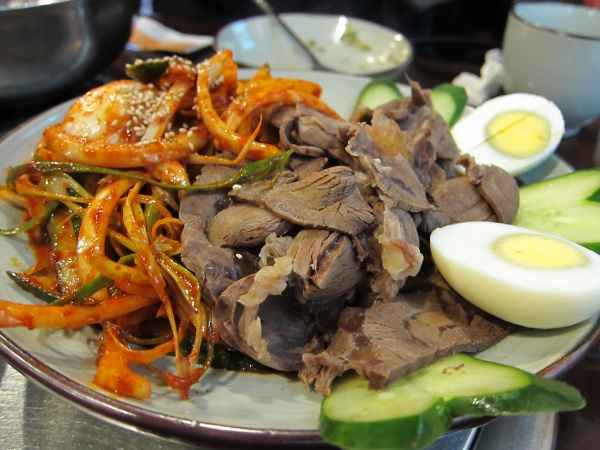Facts About Pyeonyuk
Pyeonyuk is a cherished traditional Korean dish made by boiling and pressing thin slices of meat, typically beef or pork. It is a popular choice as an anju, which is a dish paired with alcoholic drinks, as well as a flavorful topping for dishes like naengmyeon (cold noodles) and seolleongtang (ox bone soup). Historically, pyeonyuk was a staple at large feasts and banquets, particularly when substantial quantities of beef stock were being prepared. Today, it has been incorporated into modern meals, such as wrap sandwiches, providing a healthier alternative to fried or roasted meats.
For beef pyeonyuk, cuts such as brisket, plate, and foreshank are commonly used. For pork pyeonyuk, the belly, head, and trotters are the preferred choices. The preparation process begins by soaking the meat in cold water to eliminate any blood. The meat is then boiled until tender in a seasoned broth, which may include ingredients like soybean paste, rice wine, and other flavorings. After boiling, the meat is pressed, sliced thinly, and typically served with dipping sauces. For beef pyeonyuk, a soy sauce and vinegar mixture is common, whereas pork pyeonyuk is often accompanied by salted shrimp. Pork pyeonyuk can also be savored wrapped in cabbage kimchi, lettuce, or perilla leaves. Popular side dishes include fresh kimchi, spicy radish salad, and spicy vegetable salad.

 North Korea
North Korea